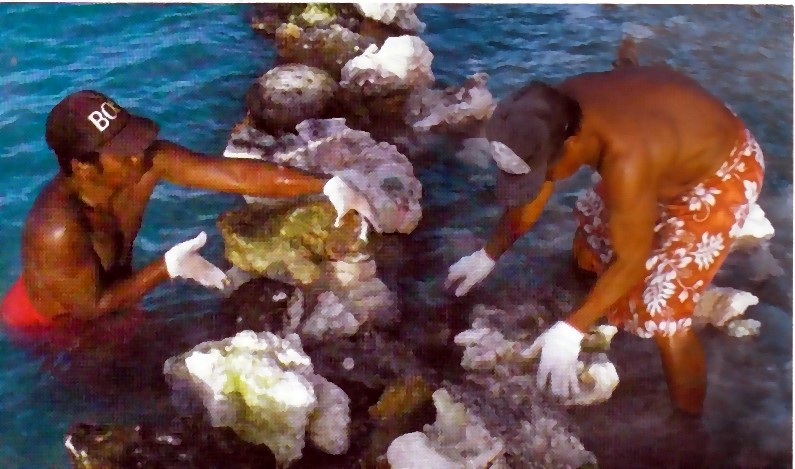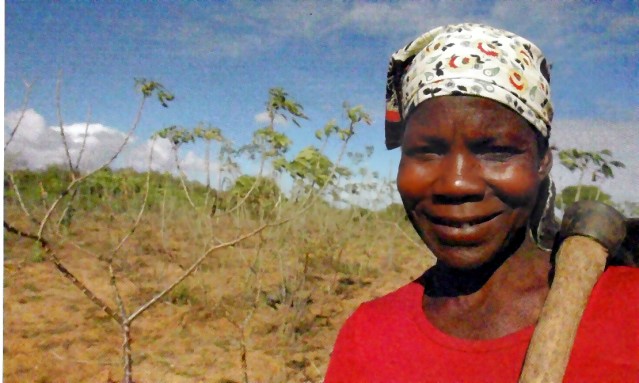The human side of climate change
As we hear the stories of subsistence farmers around the world, facing the challenges of growing crops in environments that have changed markedly, we are confronted with questions about how we can best respond. Globally, sea levels are rising, seasons are changing, and in some cases, distinct seasons are disappearing altogether. The result for many families living on the edge of survival is hunger, scarcity of drinkable water, health problems and ruined livelihoods. This is the human side of the phenomenon that is climate change.
|
|
Kiribati Climate change has already had a major impact on the people of the Kiribati nation, made up of dozens of tiny islands and atolls in the Pacific Ocean. In the king tides of 2004, many families lost their houses and gardens only to have their replanted gardens destroyed in the floods of 2009. Where their original homes stood is now beach, coconut palms that once lined the beaches are dying because of salt water intrusion and people are struggling to re-establish their food gardens as the soil is becoming too salty to grow crops. |
Building a new sea wall to protect a village |
Most difficult of all is the emotional cost of deciding which communities they will protect from the sea because they don’t have the resources or the capacity to protect all of them. And the future doesn’t look hopeful – Kiribati may become unliveable within 50 to 60 years due to sea level rise. |
|
South-East Asia and Africa In some South-East Asian countries and African countries such as Ethiopia, Malawi and Uganda, communities are impacted, not by sea level changes, but by drastic changes in seasonal patterns. The wet season is now so unpredictable that farmers have no confidence in planting crops. Worse still, if the rains do come they can be destructive and result in bad floods. Because women tend to do the jobs that are most affected by changes in weather, they are feeling the greatest pressure. |
|
As impacts from climate change worsen, women and their communities are finding new and innovative ways to cope. Some are trying to earn a living by collecting water and firewood for people in the nearest town. Communities are campaigning for water boreholes closer to their villages since this can shorten their daily walk from 7 hours down to 30 minutes, for example. They are trying to grow new crops which can survive with less rain and are more resilient to changing weather patterns. They are also learning ways of preserving food supplies for longer periods.
|
|
According to a report in New Scientist (July 2009), one of Africa’s most important crops is likely to become increasingly toxic as a result of carbon emissions. Cassava is a staple for more than half a billion of the world’s poorest people. It is promoted by UN agencies such as the Food and Agriculture Organisation as a saviour for Africa because it grows well in droughts. But now research at Monash University in Melbourne, Australia, shows that increasing carbon dioxide in the air boosts cyanide levels in its leaves. Cassava leaves and roots both contain a chemical that breaks down to release toxic hydrogen cyanide when chewed or crushed. Villagers grind cassava roots to make flour, which can then be processed to remove cyanide, but leaves are often eaten raw. The cyanide can cause a condition called konzo that permanently paralyses the legs. One study found that nine percent of Nigerians suffer some form of cyanide poisoning from eating cassava. Because cassava is such an important crop at a time of less predictable rain, the researchers have identified an urgent need to develop varieties that produce less cyanide.
|
|
|
Bangladesh Across Bangladesh millions of people are reliant on stable weather patterns for their food, livelihoods and safety. Approximately 63% of Bangladesh’s labour force works in the agriculture and fishing sector. This means that even small changes in the climate can destroy the very lands and crops which provide both food and work for almost two thirds of the population. As the annual monsoon rains are getting heavier and more unpredictable, communities are learning to be better prepared for when the floods come. They are gradually putting warning systems in place and strategies to ensure that the floods won’t wipe out food supplies. |
For more information on the way climate change is affecting rural communities, |
|



 Increasing toxicity of cassava in Africa
Increasing toxicity of cassava in Africa 